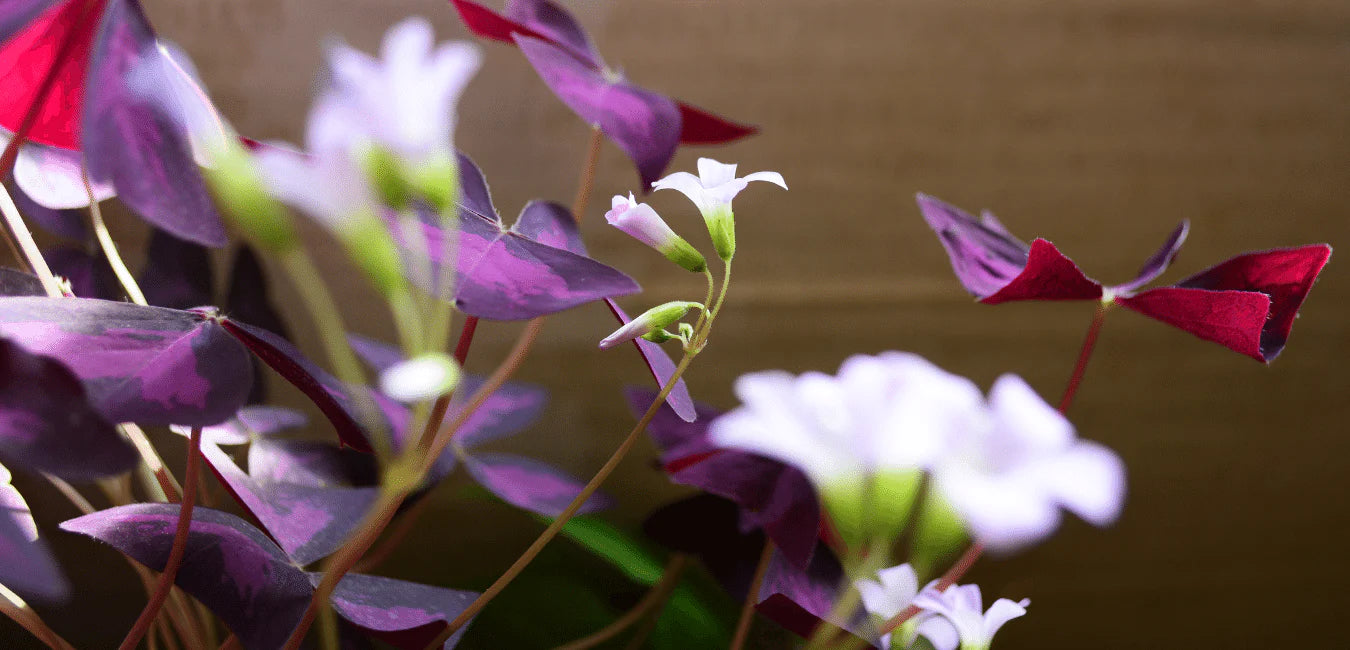Oxalis plants are dainty and elegant, and can bring with them a sense of tranquility with their large butterfly-like leaves. It is the perfect compact indoor plant to fill that sunny windowsill, which may prove too be too much for other plants.

OXALIS
Varieties from our listing
Interested to buy a plant from this group?
See what we have available HERE
Below is a general care guide for Oxalis plants which can slightly differ depending on variety.
Light & Temperature
Oxalis thrive in bright indirect light, with ideally some direct sun exposure. Rotate it every alternate day to encourage even growth as the plant tend to lean quite quickly towards the light.
Oxalis plants prefer warmer temperature, so make sure to protect your plant from exposure to cold drafts and vents.
Watering, Humidity & Misting
Oxalis enjoys moist soil and needs to be watered about 1-2 times a week. Allow half of the soil to dry out in between waterings. They would need more water in brighter light conditions. Be sure to empty our excess water to prevent root rot.
Oxalis does well in normal household humidity, but can benefit from occasional misting every other day.
Soil and Repotting
Use a standard well-draining houseplant potting mix.
Oxalis can be repotted once every 2-3 years to refresh its soil and/or to repot it into a larger pot.
Propagation
The easiest way to propagate an Oxalis is through bulb division. Simply divide existing bulbs, and repot them into new pots with fresh soil. Make sure not to pot the newly divided bulbs too closely together in the soil.
Fertiliser
Use a balanced fertiliser formulated for houseplants. Follow directions on the label of plant food. Ensure the soil is moist before applying any fertiliser.
Toxicity
Oxalis plants are toxic if ingested and should be kept out of the reach of children and pets.
Possible Issues
Under the right care and conditions, your plant will grow happy and healthy. But here are some issues you may encounter while caring for an Oxalis:
Yellow leaves with mushy stems - This is likely due to overwatering and/or root rot. Save bulbs of the plant that is not affected and repot them into fresh soil.
Wilting brown leaves with brown edges - The plant is underwater and/or there is too little humidity. Adjust watering schedule and mist the plant more often.
No new growth/ leaves all starting to die - The plant is likely to be in dormancy. To help resurrect it, place a little fertilizer and provide bright light.
Soft rot (with bad odour) - This is a sign that your Oxalis is suffering from soft rot caused by overwatering. Discard the plant as there is not cure for soft rot.


- Regular Price
- from $18.00
- Sale Price
- from $18.00
- Regular Price
- Unit Price
- per